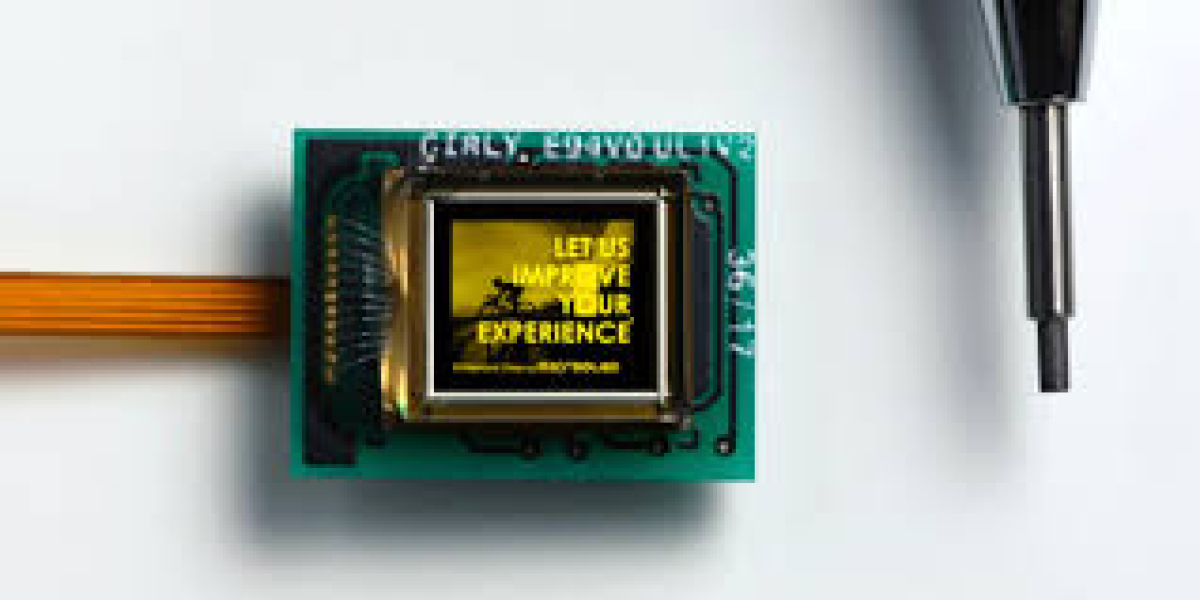The display world is evolving rapidly, and one technology leading the change is the micro OLED display. Known for its ultra-high resolution and compact design, it’s becoming the top choice for next-generation devices like augmented reality (AR) glasses, VR headsets, and advanced camera systems.
In this article, I will explain how micro OLED technology works, why it’s outperforming traditional OLED, and how it’s driving innovation in consumer electronics, optics, and wearable devices.
What Is a Micro OLED Display?
A micro OLED display is a miniaturized version of the standard OLED (Organic Light Emitting Diode) panel. Instead of being built on glass, it’s developed on a silicon wafer substrate, allowing the display to be incredibly compact while maintaining superb image quality.
This design makes it ideal for optical devices that demand high pixel density, such as smart glasses, camera viewfinders, head-mounted displays, and medical visualization systems.
Key features include:
Ultra-high pixel density (up to 5000 PPI)
Low power consumption
Exceptional color contrast and brightness
Compact and lightweight build
How Micro OLED Differs from Standard OLED
While traditional OLEDs dominate smartphones and TVs, micro OLEDs are tailored for precision optics and compact systems. The main distinction lies in the substrate — micro OLED uses silicon instead of glass, offering faster response times and denser pixel placement.
Here’s a simple comparison:
| Feature | OLED | Micro OLED |
|---|---|---|
| Substrate | Glass | Silicon |
| Pixel Density | Up to 800 PPI | Up to 5000 PPI |
| Application | TVs, phones | AR/VR devices, optics |
| Power Efficiency | Moderate | High |
| Size | Larger panels | Ultra-small modules |
This structural advantage allows micro OLEDs to deliver true-to-life visuals, making them ideal for near-eye displays in headsets or optical systems.
Applications of Micro OLED Display
Micro OLED technology is now being integrated into multiple industries. Here are the most prominent applications:
1. Augmented Reality (AR) and Virtual Reality (VR)
Micro OLEDs are revolutionizing AR/VR headsets by offering sharper visuals, reduced latency, and wider color ranges. Their ultra-fine pixel density prevents the “screen-door effect” that often plagues traditional VR displays.
2. Smart Glasses
Tech giants are adopting micro OLEDs for next-generation smart glasses, ensuring bright images even under sunlight. These displays combine clarity with energy efficiency — crucial for all-day wearable use.
3. Optical Instruments
Cameras and professional viewfinders use micro OLED panels for real-time, high-contrast image previews. The fast refresh rate provides accurate visual monitoring.
4. Military & Industrial Use
In defense and industrial environments, micro OLED displays provide rugged, low-latency visualization tools for night vision goggles, heads-up displays, and advanced targeting systems.
Benefits of Micro OLED Technology
The technology brings numerous benefits that make it superior for future applications:
Unmatched Resolution: Perfect for close-up viewing with zero pixelation.
Energy Efficiency: Uses less power than LCD or standard OLED.
Compact Design: Suitable for miniaturized devices and modules.
Faster Response Time: Ideal for motion-intensive or real-time imaging.
Better Contrast: Delivers deep blacks and vivid colors, enhancing user experience.
These qualities make micro OLED the cornerstone technology behind modern visual and wearable innovation.
Micro OLED Display Market Growth
The global market for micro OLED displays is growing rapidly as companies like Sony, Apple, and LG invest heavily in AR and VR ecosystems. According to market analysis, demand is expected to rise significantly through 2030, driven by metaverse applications, wearable technology, and industrial optics.
As production costs continue to decrease, we can expect wider adoption of micro OLED modules across smartphones, cameras, and automotive HUDs.
Future of Display Innovation
The future of display technology will rely on energy-efficient, compact, and high-resolution panels, and micro OLEDs check all those boxes. With continuous research in nanofabrication and display design, they are poised to become the standard for immersive viewing experiences.
If your business focuses on optical solutions, upgrading to micro OLED display components can enhance image accuracy, durability, and performance — key factors for professional-grade products.
Conclusion
Micro OLED displays are redefining how we experience digital visuals — from AR/VR headsets to smart optical systems. Their combination of high resolution, low power consumption, and compact size makes them an ideal fit for the next generation of connected devices.
As technology moves toward lighter, sharper, and smarter solutions, micro OLED will continue to play a vital role in transforming the future of display innovation across multiple industries.

















